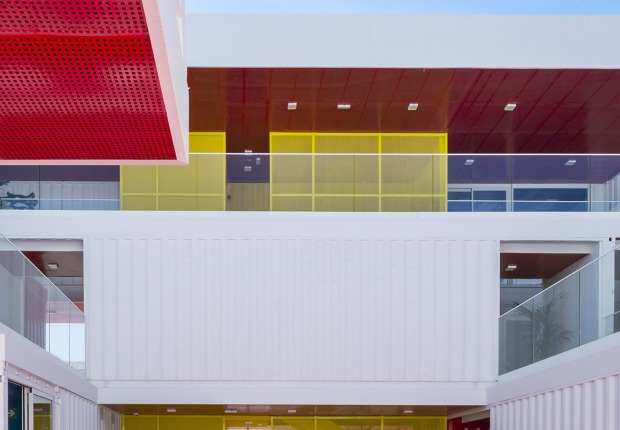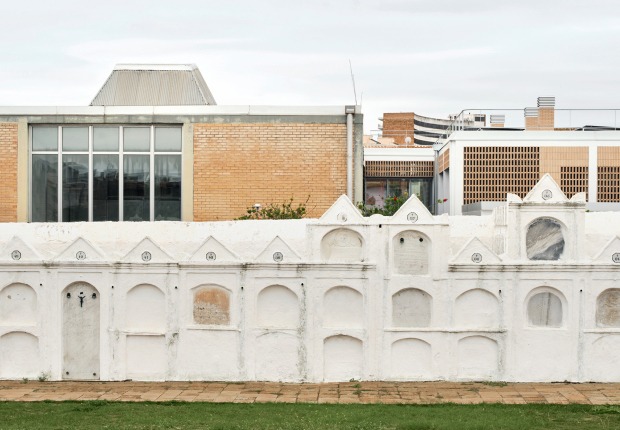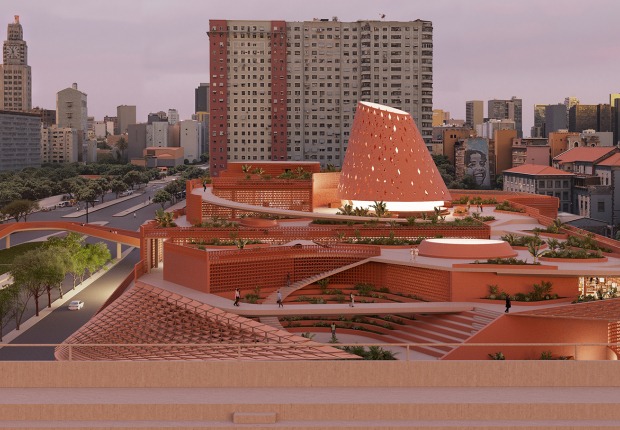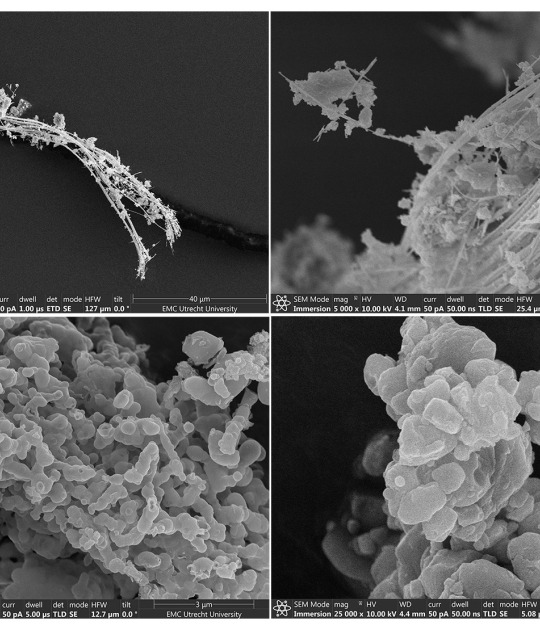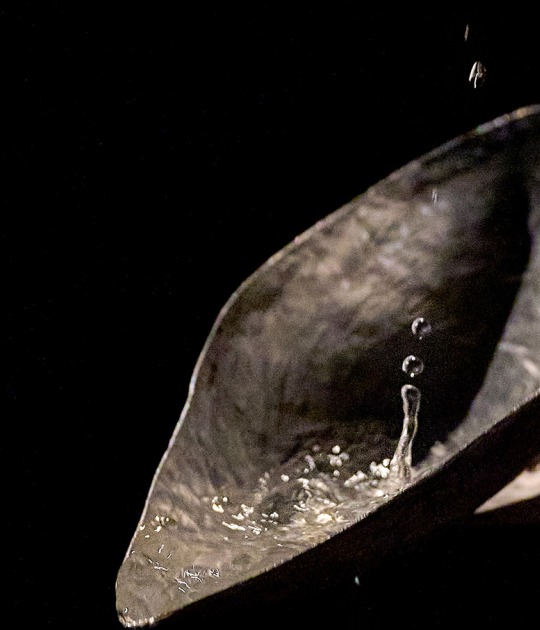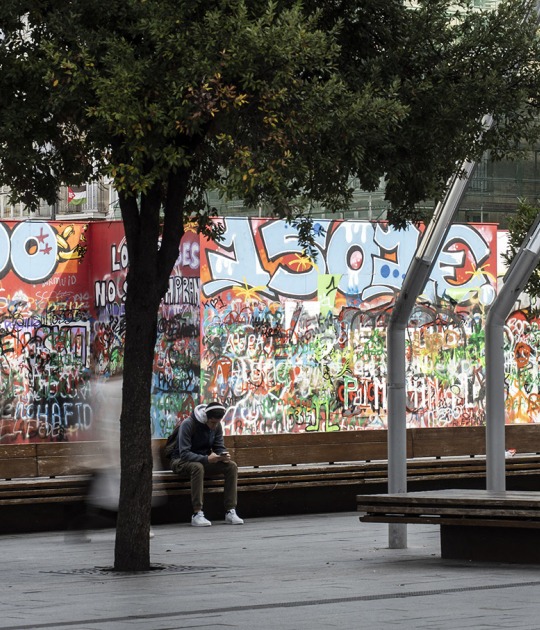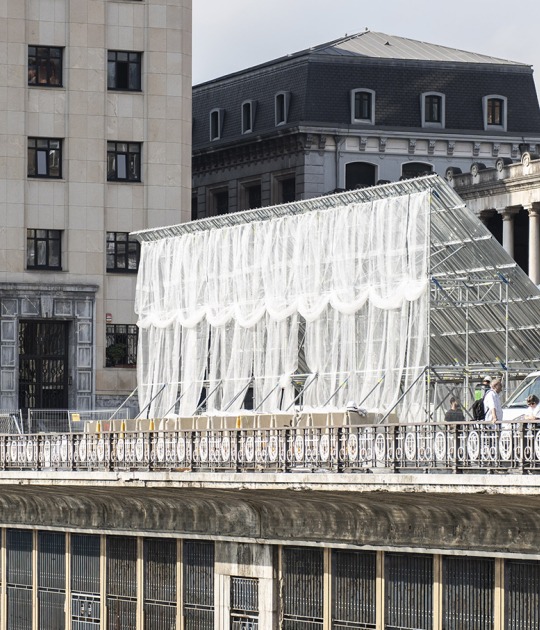After more than 12 years of preparation, according to the curators, Pablo Rabasco and Martín Domínguez Ruz, a long awaited exhibition has arrived for the acknowledgment of these two exiled architects, Arniches and Domínguez. The ICO Museum presents the exhibition "Arniches y Domínguez. La Arquitectura y la Vida / Arniches and Domínguez. Architecture and Life", an exhibition that traces the trajectory of two of the most brilliant Spanish architects of the first half of the 20th century.
The exhibition is organized in two floors: a first one of explanation of the different contexts through which they traveled their lives, - Spain, Cuba and the United States - with very interesting documents and writings, and a second floor with the presentation of their most important projects.
It is interesting to note this second floor, with a floating boards design, suspended in a forest of suspenders, composed of groups of tables, where, and this is important, in each set, the black platform exposes the project and in the rest of white platforms, orbiting around it, explain and present documents, plans, models or photographs of the project mentioned above.
- Between 1923 and 1936 Arniches and Domínguez formed one of the most creative societies of architects of the twentieth century in Spain, separated later by exile.
- The projects of this time are directly related to the social, cultural and educational transformation that was taking place in Spain.
- Between his works they emphasize the Institute-School and the Parvulario of the Hill of the Poplars, the Hostels of Road (1928-1935) and, especially, Hipódromo de la Zarzuela (1935), projected next to Eduardo Torroja.
- In the exhibition also the works that after the War realized Martín Domínguez in Cuba and the United States and Carlos Arniches in Spain can be seen.
Influenced by the ideas of the Free Institution of Education and Residence of Students, where Domínguez was a resident, his projects in the fields of education, tourism or leisure were a reflection of his commitment to new currents of European thought. They realized some brilliant works like School Institute (1931), Hostels of Road (1928-1935) and, especially, Hipódromo de la Zarzuela (1935), projected next to Eduardo Torroja. After the Civil War, their careers were separated. Arniches began a long inner exile. Dominguez exiled and developed an outstanding career in Cuba, where he excelled in the area of housing, to be exiled again in 1960 to the United States. His last ten years he spent as a teacher at Cornell University (Ithaca, New York).
Exile is a political and social punishment that transcends the concrete moment and lasts beyond the vital time. Forgetfulness not only clouds the past, but redefines the future. This exhibition will try to recover your memory.
The Curators
The exhibition is curated by Pablo Rabasco and Martin Domínguez Ruz.
Pablo Rabasco full professor of History of Art and Director General of Culture of the University of Cordoba. He has been a Principal Investigator of Research Projects of the National Plan 2010 and 2014, of the Ministry of Science and Competitiveness, on the influence of self-managed practices in the city, public space and architecture, and on habitat and architecture in the Spanish colonies in Africa.
In March of 2015 he curated the exhibition and edition of a monograph in Architecture AAP at Cornell University on the architect Martín Domínguez, a project carried out in collaboration with Martín Domínguez Ruz. In 2016 he curated the exhibition "Pueblos de Tierra" on the architecture of the National Institute of Colonization in Cordoba.
Martín Domínguez Ruz has been a collegial architect since 1985. He has lectured as an associate professor and guest lecturer at the Superior School of Architecture in Madrid, at the Polytechnic University of Lausanne and at the Federal Polytechnic University of Zurich. He has collaborated in the Quaderns magazines edited by the Official College of Architects of Barcelona and in Werk-Archithese of Zurich.











